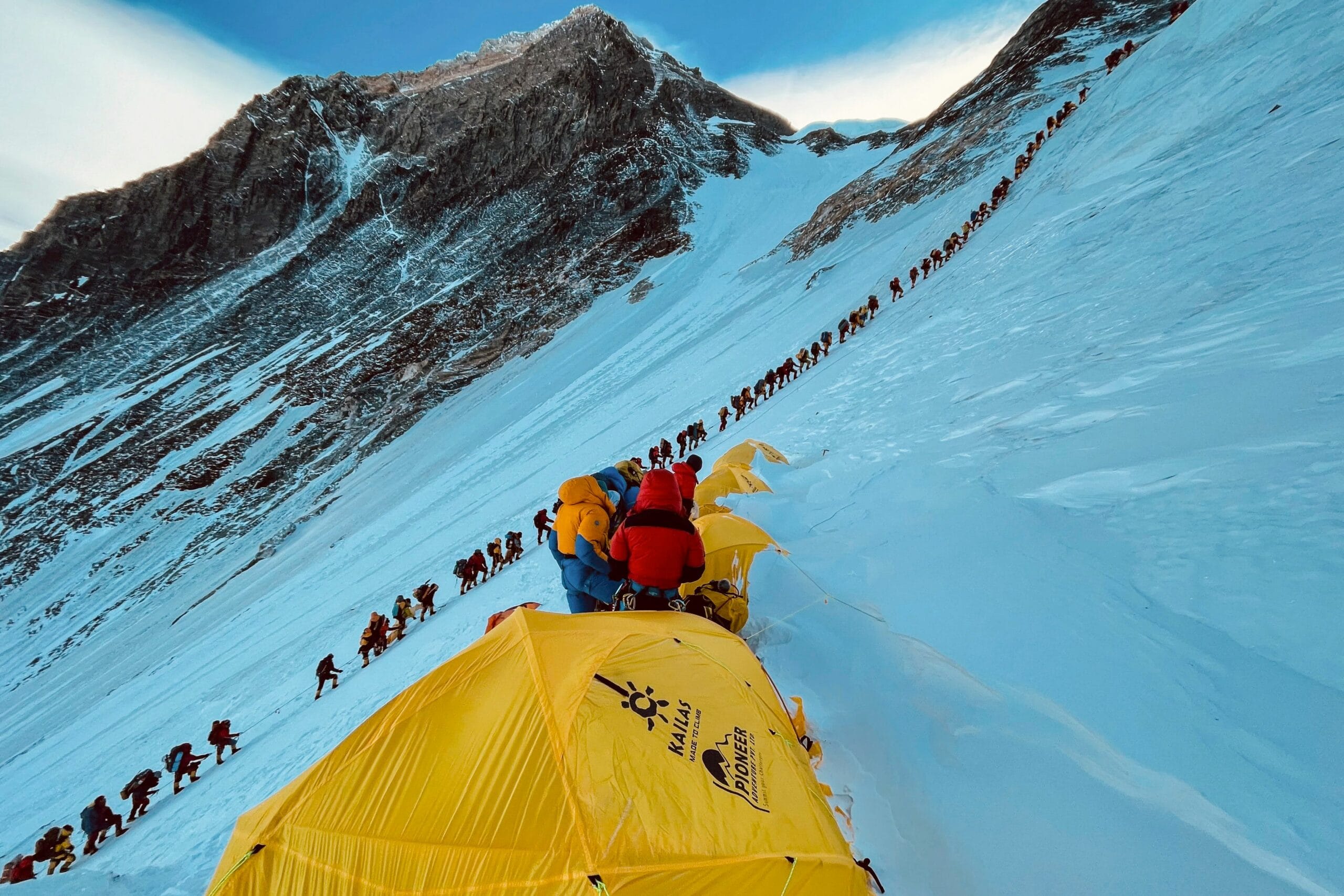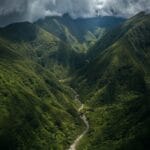High on the slopes of Mount Everest, nestled in a silent, frozen alcove, lies a grim reminder of the mountain’s raw power: “Green Boots.” This nameless climber, forever frozen in time, has become an eerie landmark on the world’s highest peak. But who was Green Boots, and why does his presence continue to captivate and haunt climbers decades later?
Unraveling the Identity of Green Boots
The most popular theory suggests Green Boots is Tsewang Paljor, a young Indian climber lost in the devastating 1996 Mount Everest disaster that claimed the lives of eight climbers. Paljor was last seen wearing a pair of green Koflach boots, leading many to believe he was the man in the alcove.
However, doubts linger. Some climbers who encountered the body claim the clothing and gear didn’t perfectly match what Paljor was known to have worn. Could Green Boots be someone else entirely? The mystery remains, adding to the intrigue surrounding this somber landmark.
The Silent Companions: Unveiling the Untold Stories
Green Boots’ story is just one of many on Everest. Over 200 climbers have perished on the mountain, their frozen bodies left behind in the unforgiving terrain. It’s highly probable that the individual near Green Boots was also a climber who perished during the 1996 disaster. They, along with countless others, serve as a haunting reminder of the mountain’s deadly allure.
The extreme conditions on Everest make body recovery incredibly dangerous, and sadly, many remain on the mountain to this day. Visual identification is nearly impossible given the state of the bodies, and DNA testing, while a possibility, poses significant logistical challenges.
The Ethics of Death on Everest: A Complex Dilemma
The presence of bodies on Everest, including Green Boots, has ignited fierce debates about respect for the dead and the ethics of high-altitude mountaineering. Retrieving bodies from the “Death Zone” – the area above 8,000 meters where the air is thin and the cold relentless – is incredibly risky and often impossible.
Yet, the idea of leaving fallen climbers exposed to the elements, their bodies becoming permanent fixtures on the mountain, raises complex questions:
- Should the pursuit of personal ambitions outweigh the risks, both to the climber and potential rescuers?
- What is our responsibility to those lost on the mountain, their bodies left behind in this frozen, unforgiving world?
There are no easy answers. Some argue for retrieval, emphasizing respect for the deceased and their families. Others believe the bodies should remain as solemn reminders of the risks involved, pushing climbers to confront the very real dangers before attempting such a climb.
The Disappearance of Green Boots: Another Layer of Mystery
For years, Green Boots remained in that alcove, a somber symbol of Everest’s allure and peril. Then, sometime between 2014 and 2017, he vanished. Rumors suggest his body was moved, perhaps to a less visible location or even down the mountain. The details are shrouded in uncertainty, adding another layer to the enduring mystery of Green Boots.
Is Sleeping Beauty Still on Everest? A Tragic Reminder
The story of Francys Arsentiev, often referred to as “Sleeping Beauty,” is another tragic reminder of Everest’s unforgiving nature. After reaching the summit without supplemental oxygen in 1998 – a remarkable feat – she tragically became stranded during the descent. Despite valiant rescue attempts, the extreme altitude and brutal conditions made saving her impossible.
For years, Arsentiev’s body, frozen in the snow, became a hauntingly familiar sight, a stark and chilling reminder of the mountain’s power. In 1999, a team led by Ian Woodall made it their mission to give Arsentiev a more dignified resting place, carefully moving her to a less exposed location.
While her physical presence is gone, Arsentiev’s story continues to echo amongst those who dare to challenge Everest. Her story, like that of Green Boots, fuels the ongoing discussion about the ethics of body recovery on the mountain.
The Cost of Ambition: Climbing Mount Everest in 2023
The allure of Everest is undeniable, but the journey comes at a price–and not just a metaphorical one. Those dreaming of conquering the world’s highest peak can expect to pay a hefty sum, with expedition costs ranging from $30,000 to upwards of $120,000 in 2023.
Let’s break down the financial commitment:
Expedition Operator Fees: The Foundation of Your Climb
Your expedition operator is your lifeline on Everest, providing guidance, support, and essential services. The cost of their services varies widely depending on the level of service:
- Basic Expeditions: These packages provide essential climbing gear, Sherpa support, and meals at base camp, ranging from $30,000 to $40,000.
- Western-Guided Expeditions: Offering seasoned Western guides, a higher Sherpa-to-climber ratio, and a focus on enhanced comfort and safety, these expeditions cost between $60,000 and $80,000 or more.
- Luxury Expeditions: For those seeking the ultimate Everest experience, luxury packages offer premium services like helicopter transport, dedicated chefs, and top-notch amenities, costing upwards of $100,000.
Permits and Fees: The Price of Entry
Climbing Everest requires navigating a web of permits and fees:
- Nepal: A climbing permit from Nepal costs $11,000 per climber, with additional costs for liaison officers, trash deposits, and other essentials.
- Tibet: Climbing from the Tibet side will set you back around $9,950, subject to change.
Gearing Up: Essential Equipment for Extreme Conditions
Climbing Everest demands specialized gear built to withstand extreme conditions:
- Down Suit: A high-quality down suit, essential for battling frigid temperatures, costs between $1,000 and $2,000.
- High-Altitude Boots: Specialized boots designed for gripping icy terrain are crucial and cost $1,000 or more.
- Ice Axe and Crampons: Navigating glaciers requires an ice axe and crampons, costing roughly $500 to $1,000.
- Oxygen System: An absolute necessity for survival at extreme altitudes, an oxygen system can cost anywhere from $5,000 to $8,000.
In addition to these essential items, you’ll need a range of other equipment, including a backpack, sleeping bag, layers of clothing, and more, bringing the total gear cost to around $6,000 to $8,000 or more.
Additional Costs: Don’t Forget the Extras!
Beyond the major expenses, various additional costs can quickly add up:
- Flights: International and domestic flights to reach the Himalayas can be a significant expense.
- Base Camp Transportation: You’ll need transportation from the airport to base camp, often involving a combination of vehicles and potentially yaks, adding to the overall cost.
- Travel Insurance: Comprehensive travel insurance, including high-altitude trekking and rescue coverage, is non-negotiable.
- Training and Preparation: Everest demands peak physical condition. Factor in costs for training programs, gym memberships, and potentially personal training.
- Contingency Funds: It’s crucial to have a financial cushion for unexpected events, such as weather delays or the need for additional supplies.
Conclusion: The Enduring Allure of Everest
Climbing Mount Everest is an adventure of a lifetime, a testament to human endurance and the pursuit of the extraordinary. While Green Boots stands as a chilling reminder of the risks, his presence also reflects the unwavering spirit of those drawn to Everest’s slopes.
As you plan your own Everest expedition, remember that careful planning, meticulous budgeting, and a healthy dose of determination are crucial. The cost of climbing Everest is high, but the experience – the challenge, the beauty, and the profound connection with nature – is priceless.
Check out our incredibly durable green boots everest that are perfect for taking on any terrain, no matter how extreme.
















1 thought on “The Mystery of Green Boots on Mt Everest: Who Was He and Why Does He Remain?”
Comments are closed.